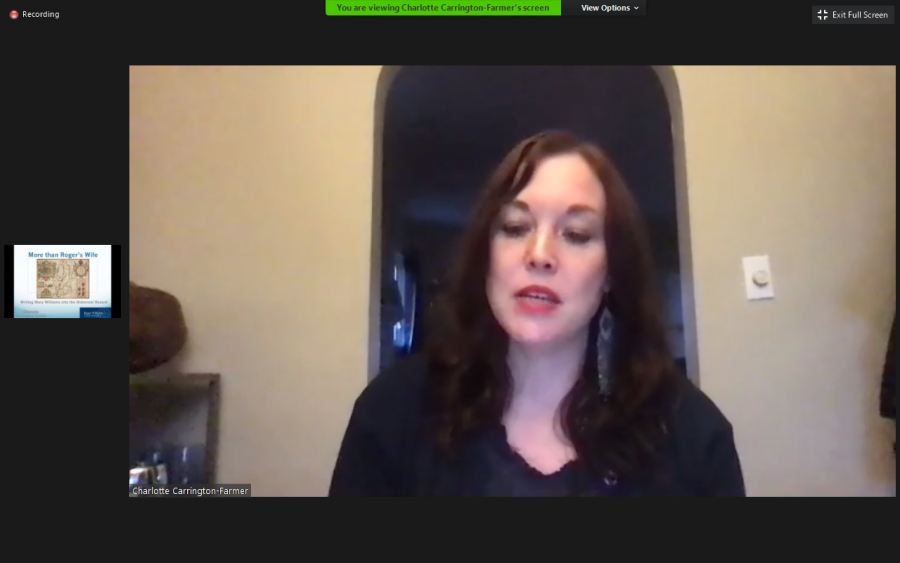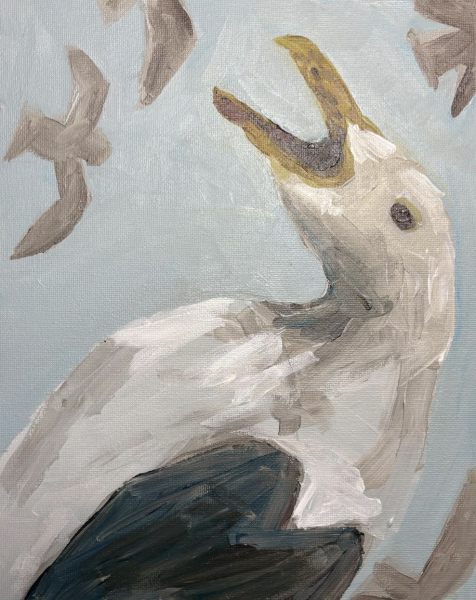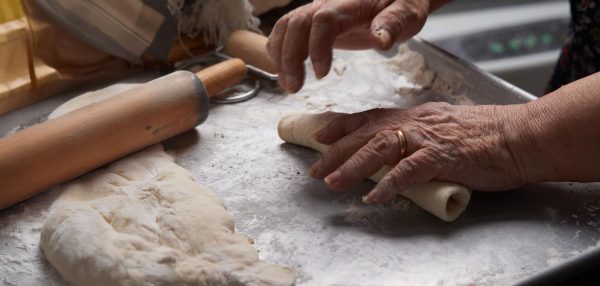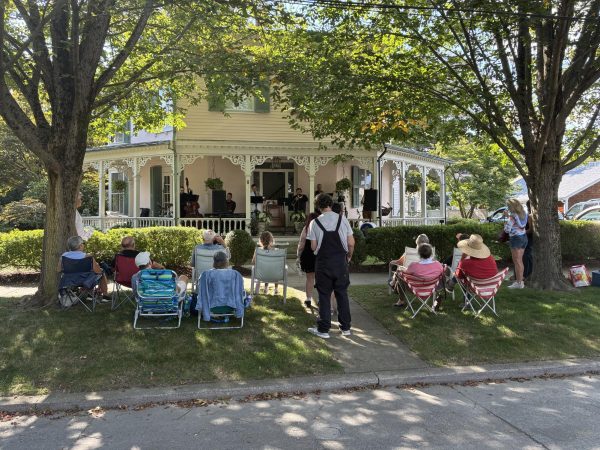University ends Women’s History Month with presentation on the life of Mary Williams
Carrington-Farmer discusses the life of Mary Williams.
On March 30, Roger Williams University held a historical event titled “More Than Roger’s Wife: Writing Mary Williams Into the Historical Record,” presenting Mary Williams, the wife of the university’s namesake, as a prominent figure. In honor of Women’s History Month ending, the event was a conscious attempt to write Williams into history.
In past discussions and in historical records, Mary is mentioned only as being the spouse of Roger, without much other information documenting her life and who she was. Dr. Charlotte Carrington-Farmer, Associate Professor of History at RWU, headed the event. Dawn Williams, who presented herself as one of the last relatives to carry on the Williams name in connection to Roger Williams’ lineage, introduced Carrington-Farmer at the beginning of the event.
Mary was born as Mary Barnard or Bernard — her last name is shown to be written both ways. She was raised in the south of England in the town of Worksop, located in Nottinghamshire. Unfortunately, not many written records from Mary herself remain, so historians must rely on the records written by the people around her or people who are related to her. As such, her story begins when individuals look into the fact that Roger was actually head over heels in love with a woman named Jane Whalley. Note: Mary and Jane had a connection.
Mary worked as a maid, though in the 17th century she was seen as a companion rather than a servant. She worked in order to be trained in household arts, management and manners. Whalley was the cousin of her employer’s wife. However, Whalley’s aunt forbade Roger from marrying her due to his social status and only seven months later it was shown that he married Mary on Dec. 15, 1629. It is unclear whether Mary knew of his previous affections.
It might seem odd that Mary and Roger ended up together but the connection runs deeper. Mary and her family lived in Worksop and knew at least some of the families who started the Plymouth colonies. It is also known that like Roger Williams, Mary’s father, Reverend Richard Bernard, had ideas that pushed the envelope as he participated in pamphlet wars. From his publications, historians infer that Mary experienced a devoutly religious childhood. Her father wrote extensively on cases of witchcraft and religious education of youth. He wrote about the role of women in the household and household government. He believed it was important to keep all from idleness, stay away from wickedness and distribute scripture.
Two manuscripts exist that show he corresponded with John Cotton in 1637 about the need to separate the church, discussing how the church of England was the only real church. So, there is a possibility that Roger Williams could have been corresponding with his father-in-law and it made perfect sense for them to come together since she was the daughter of a clergyman. Thus, their social status fit together.
In Roger’s letter to Whalley, he did mention he had another offer on the table, which can be assumed to have been Mary. An arranged marriage might have taken place and it goes back to their ties in Nottinghamshire. Carrington-Farmer found it unlikely that her father would have forced her into the marriage.
Mary had six children who survived to adulthood: Mary, Freeborn, Providence, Mercy, Daniel and Joseph Williams. Her caring personality is apparent as she entered into a dispute with Roger after his refusal to break bread with an unredeemed soul in Providence. There is also a story of her caring for Thomas Roberts, a soldier she nursed back to health after he was left almost dying near their house. It can be assumed she had some proficiency in the Narragansett language due to the fact that many Native American leaders came to their house and her housing of a young boy.
Mary knew how to stand her ground, which is why Carrington-Farmer believes it is unlikely she was forced into marriage. When Roger had to leave Mary behind to travel to England, there were letters of him pleading for his wife and his longing for her to join him. However, she chose to stay in New England.
Carrington-Farmer explained how difficult it is to piece together the lives of women in history. The use of sources have to be creative and much of the information about them comes from the men they had in their lives.
There is no exact date or year of when Mary died. However, it is known that she was still alive in Sept. 1676 as Roger wrote about her in a letter to his brother. It was likely that she spent the last of her days with one of her sons, either Joseph or Daniel. When Roger’s grave was dug up for the first time, a woman was found next to him. It was a separate grave but still close to his. There were bone fragments, hair and teeth, and it was the right place on the hill and the right age. When they moved Roger, they moved what was presumed to have been Mary too.






